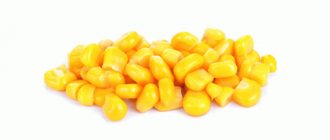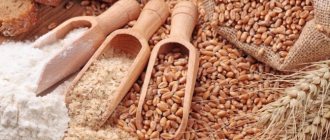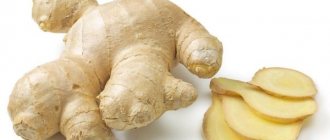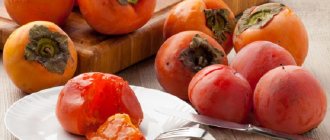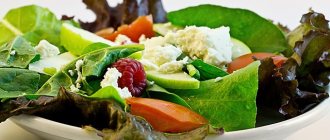Gastritis is a common disease. If the disease is not treated in time, one-time inflammation (acute gastritis) easily becomes chronic, requiring constant medical supervision.
Poor nutrition, infection with the pylori bacterium, lack of beneficial vitamins and minerals are the causes of gastritis.
With gastritis, inflammation of the gastric mucosa occurs and a strict diet is one of the mandatory stages in the treatment of this disease. It is often easier to give up fatty, hot or spicy foods than to ban sweets. Is it possible to eat chocolate if you have gastritis? This question arises very acutely for patients, because it is not at all easy to forget about a favorite delicacy.
Diet for the treatment of gastritis
At the first signs of inflammation in the gastrointestinal tract (nausea, stomach pain, heartburn), patients switch to dietary nutrition to reduce the irritating effect of food on the stomach (intestines). The diet excludes:
- salty, spicy, fatty foods;
- alcohol, cigarettes;
- I write fried food;
- sour and sweet (selected types of juices and fruits, cakes).
The emphasis is on low-fat, light foods - porridge, soups, steamed vegetables.
It is harder to give up sweets (cakes, pastries, sweets, chocolates). People with stomach inflammation are wondering if it is possible to eat chocolate if they have gastritis? Let's find out whether the product contains substances harmful to the digestive system.
What is chocolate?
To understand whether you can include chocolate in your diet, you need to remember what it is made from and what is included in its composition.
The product is based on cocoa beans, which themselves have a bitter, rather unpleasant taste. Cocoa butter is made from beans - a very fatty product that requires a healthy stomach to digest.
When producing chocolate, sugar, milk, various fillers, alcohol, raisins, nuts, pieces of berries or fruits, and various fillings are added to its composition. To make the product beautiful, dyes, thickeners and stabilizers are used. To stimulate appetite, flavors are added to it, and preservatives are added for a longer shelf life.
If we consider each component separately, then none of these products are included in the gentle diet of a patient with gastritis. In addition, cocoa beans contain a lot of caffeine, which is also contraindicated for this disease.
There is a list of ingredients that make up real chocolate:
- A large amount of cocoa powder.
- Cacao butter.
- Lecithin.
- Sugar, which gives the product sweetness, since all these ingredients are bitter.
Chocolate owes its beneficial qualities to the following components:
- Kakhetins are antioxidants that protect the body from the destructive effects of free radicals.
- Flavonoids are substances that prevent blood clots from forming because they thin the blood. A large number of plant flavonoids protect blood vessels from the negative effects of nicotine.
- Theobromine is a plant alkaloid. The main effect is relaxation of smooth muscles.
- Caffeine is a methylxanthine that has a psychostimulant effect.
- Tannins are organic acids with tanning properties.
- Anandamide is a neurotransmitter that binds to cannabinoid receptors in the brain. Improves mood.
- Dopamine is a neurotransmitter. Affects the effectiveness of learning and memory. Activates the pleasure center in the central nervous system. Responsible for coordination of movements.
- Tyramine is a biogenic amine. Has a stimulating effect. Increases blood pressure.
- Epicatecin and polyphenol are antioxidant substances.
- Arginine, histamine and tryptophan are amino acids used for the synthesis of biogenic amines in the central nervous system.
- Phenylethylamine is a biologically active compound, a precursor of neurotransmitters. Improves mood and mental activity. Improves concentration.
In addition, chocolate contains many vitamins, magnesium, iron, phosphorus, potassium and calcium.
Despite all these advantages, even completely healthy people should not eat a lot of chocolate. This is due to the high sugar content in it and the fat and calorie content of the product.
The effect of cocoa beans on the stomach
Cocoa processing products contain a lot of vegetable fats that are difficult for the stomach to digest. In addition to fats, cocoa beans contain about 300 microelements. Some of these elements cause a stimulating effect. Especially theobromine and caffeine stimulate appetite and cause the secretion of gastric juice. In general, it should be noted that this product is not dietary.
Types of chocolate, their composition and effect on the body
- Black (bitter chocolate) – contains the maximum amount of cocoa butter (up to 99%) and a minimum of other products.
- White – contains almost no cocoa bean derivatives. Made from milk powder, sugar and vanillin.
- Dairy - its base is milk powder, powder and grated cocoa.
- Diabetic – sugar is replaced with diabetic analogues.
- Vegan – animal milk is replaced with soy coconut milk, etc.
All these varieties can be sold in the form of bars, candies, etc., and can also be included in other confectionery products.
Types of chocolate
The product is divided according to the content of grated cocoa (cocoa mass) into bitter, milk and white. Let's take a closer look at these varieties.
bitter chocolate
Its main difference is its high cocoa content. If chocolate contains from 55 to 70% cocoa solids, it is called dark. More than 70% cocoa is a sign of high-quality dark chocolate. The taste is tart, with a slight bitterness. The color is dark brown.
Milk chocolate
Consists of cocoa mass, cocoa butter, milk powder or cream, powdered sugar. Cocoa content not less than 35%. It has a softer creamy taste and light brown color. Melts easily in your hands.
White chocolate
If we approach the issue strictly, we cannot call it chocolate. It does not contain cocoa liquor, and therefore theobromine and caffeine. It contains: cocoa butter (at least 20%), milk powder or cream, sugar, flavorings. The taste is creamy. The color is cream or light yellow. It melts quickly in your hands.
Table. Composition of different types of chocolate.
| Compound | Bitter | Lactic | White |
| Cocoa mass | 55–90% | Not less than 35% | Absent |
| Cacao butter | Less than 30% | Not less than 20% | Not less than 20% |
| Powdered milk or cream | Absent | Yes | Yes |
| Powdered sugar | Yes | Yes | Yes |
| Flavors | Yes | Yes | Yes |
| Emulsifiers | Lecithin | Lecithin | Lecithin |
| Calorie content, 100 g | 520 kcal | 539 kcal | 550 kcal |
| Proteins, 100g | 6.2 | 5.7 | 4.2 |
| Fats, 100 g | 35.4 | 31 | 30 |
| Carbohydrates, 100 g | 20-40 | 56.7 | 62.2 |
Any type can contain a variety of fillings. The most commonly used fillers are:
- nuts (hazelnuts, almonds, cashews);
- raisin;
- candied fruits (orange, lemon);
- ground coffee;
- waffles.
For diabetic patients, bars with sweeteners have been developed. Their sweet taste is provided by:
- fructose;
- xylitol;
- sorbitol;
- stevia extract.
This is a highly nutritious and high-calorie product. It is well absorbed by the body, increases concentration, gives vigor, and improves mood.
The most useful, from a nutritional point of view, is the bitter variety; it contains the maximum percentage of cocoa, a minimum of carbohydrates and is lower in calories.
Milk and especially white are more pleasant to the taste, but do not have any particular benefits for the body. However, is this true in the case of a sick stomach? Read below about whether you can eat chocolate if you have gastritis.
Composition and beneficial properties
Chocolate is a sweet dessert made from cocoa beans. From this product, valuable cocoa butter and cocoa mass are obtained, which are its key components. Cocoa beans themselves are not edible: they are bitter and unpleasant to the taste.
Expert opinion
Irina Vasilievna
Practicing gastroenterologist
Among gourmets, the most valuable is chocolate, where the percentage of cocoa liquor is the highest in the bulk of the product. In addition, the sweets include: sugar/powdered sugar, milk powder, vegetable fats.
Also, flavorings are often added to improve taste, and preservatives are added to increase shelf life. Manufacturers of inexpensive brands, to reduce costs, replace a certain percentage of cocoa butter with trans fats.
By adding milk powder or cream, milk chocolate is obtained: the most nutritious and high in fat. White chocolate does not contain cocoa butter , but is saturated with vegetable fats.
Chocolate is a high-calorie product. Therefore, it is contraindicated for people who are obese , and due to its high sugar content, for people with diabetes.
| Product | Calorie content per 100 g, Kcal | Proteins per 100 g. | Fats per 100 gr. | Carbohydrates per 100 g. |
| Dark chocolate | 546 | 4,9 | 30,2 | 61 |
| Milk chocolate | 550 | 6,9 | 35,7 | 54,4 |
| bitter chocolate | 539 | 6,2 | 35,4 | 48,2 |
| White chocolate | 541 | 4,2 | 30,4 | 62,2 |
It also contains vitamins A, B1, B2, E and PP and macroelements: potassium, calcium, iron, sodium, phosphorus.
On our website: Chicory for gastritis - is it possible or not?
There are special types of chocolate:
- vegetarian - does not contain cow's milk, it is replaced with rice, soy, almond milk;
- diabetic - sugar in the composition is replaced by sweeteners: stevia, xylitol, sorbitol, mannitol, isomalt.
Diet food
If acute or chronic diseases of the gastrointestinal tract are detected, patients are advised to reconsider their usual lifestyle. Changing habits includes re-evaluating your daily food intake. Inflammatory processes on the mucous membranes of the stomach require the removal of heavy foods that cause difficulty in processing them. Easily digestible, tender food should prevail on the table.
The classic dietary requirements for all forms of gastritis have a number of mandatory rules:
- Prohibitions on eating spicy, smoked, salty foods;
- Stop using alcoholic and low-alcohol drinks for the entire duration of treatment;
- Avoid fried foods;
- Mandatory introduction of fermented milk products into the daily diet;
- Limiting or excluding sweets, spices and freshly baked bread, sweet pastries;
- Dividing the three main meals into two times - you need to eat at least 6 times a day;
- Reducing portions to minimum sizes.
By reviewing their diet, patients speed up the healing process of damaged mucous membrane surfaces and their own recovery. Spicy, smoked, fried foods are easily removed from the daily table; the main problems are caused by the requirement to exclude sweets. Some patients periodically break down, consuming prohibited delicacies, worsening the condition of their stomach and well-being.
Dietary recommendations
When diagnosing acute or chronic diseases of the digestive tract, you should change your lifestyle, especially with regard to nutrition. Not only chocolate is prohibited, but also many other products.
To relieve the inflammatory process in the gastric mucosa, it is necessary to remove heavy foods from the diet that are difficult to process. The diet should contain more easily digestible food.
For a speedy recovery, along with taking medications, it is important to follow a strict diet, especially in the acute stage. You need to remove from your daily diet:
- fatty foods;
- fried foods;
- everything spicy, spices;
- pickled, canned foods;
- fast food;
- semi-finished products;
- coffee, cocoa;
- bakery products;
- freshly baked bread, rye bread;
- carbonated drinks, kvass;
- milk;
- alcoholic drinks.
In case of inflammation of the mucous membrane, the doctor can give additional recommendations. Food should only be eaten warm; hot and cold foods are prohibited. Dishes should not be coarse, preferably crushed, pureed, in liquid form. This way they will not have a negative effect on the inflamed inner walls of the stomach or irritate them. It is important to consume more fermented milk products; your diet should include kefir, fermented baked milk, and yogurt. It is good if the patient adheres to such a diet constantly, especially with a chronic course of the pathology.
Requires fractional meals. The patient should eat at least 5 times a day, portions should be small. You should not drink carbonated drinks, they greatly irritate the stomach, which will worsen your health.
With a complete change in diet, patients have a chance to improve their well-being and recovery, which is confirmed by reviews from those who have been cured. And while some foods can be easily avoided, not everyone can eliminate sweets from their lives. Therefore, questions arise whether chocolate can be used for gastritis with high acidity and other gastrointestinal diseases.
Failure to follow the doctor’s recommendations causes atrophic processes on the gastric mucosa, complications including the formation of ulcers and a significant deterioration in well-being.
Should I give it up?
Unfortunately, lovers of this delicacy who have been diagnosed with gastritis have nothing special to please - they need to refuse it.
Once in the stomach, chocolate provokes the production of hydrochloric acid, which absolutely cannot be done with gastritis.
This is due to the composition of chocolate: vegetable, too fatty cocoa butter, as well as caffeine. At the same time, there is an opinion that different types of chocolate - white, milk and black - have different effects on the stomach:
- white - does not contain caffeine, because during production no chocolate liqueur or cocoa powder is added to it, it is the sweetest, but the stomach must only cope with a large amount of vegetable fats;
- milk - made with the addition of milk powder, which means its fat content increases significantly and it already contains caffeine;
- bitter - consists only of cocoa butter and cocoa powder with minimal addition of sugar and other ingredients, which means that the stomach will react to the high content of caffeine and vegetable fats in such a product.
There is no ideal chocolate product for a patient with gastritis, and milk chocolate with gastritis is the first and forever excluded from the diet. It is also unacceptable to consume chocolate with various fillings, additives, alcohol, or nuts.
However, with very careful introduction of white or dark chocolate into food, you can try to understand what the stomach accepts and what you need to abstain from. Of course, eating this product in tablets is unacceptable, but one slice of your favorite treat along with tea may not cause serious problems. If symptoms of exacerbation of gastritis appear, such as heaviness in the stomach, nagging pain, belching with an unpleasant odor, or heartburn, you should immediately completely stop eating sweet treats. By the way, the daily norm even for a healthy person is no more than 50 g.
How much can you eat and what can you replace it with?
The relative norm for chocolate consumption for gastritis is 2-3 cubes (about 20 g). You can afford chocolate no more than 1-2 times a week. If you want sweets more often, it is recommended to replace chocolate products with products that do not affect the acidity of the gastrointestinal environment.
- Diabetic chocolate . This chocolate contains sweeteners (sorbitol, stevia) and does not cause fermentation and rotting processes in the intestines, so it can be consumed up to 3-4 times a week. The norm is 30-40 g.
- Vegan chocolate . It is made from rice, soy, and almond milk and does not contain cocoa butter or cocoa beans, therefore it does not affect the activity of histamine receptors and does not increase the acidity of gastric juice. The norm is up to 40 g per day.
- Sweets based on agar-agar . Agar-agar is a food supplement obtained from red and brown algae. It increases local immunity, promotes healing of the gastric mucosa, and envelops its walls. Agar-agar can be used in the production of marshmallows, marshmallows, and marmalade. You can consume products from this group up to 50 g per day.
Chocolate is a product of mass consumption, and if a person is used to eating chocolate products every day, he will not be able to immediately give up his habit. Even with gastritis, you can find compromise options, for example, replacing milk chocolate with a product for vegans or diabetics. Occasionally you can indulge in some chocolates, but you need to choose a quality product made from real cocoa butter.
Chocolate for gastritis
Gastritis is inflammation of the gastric mucosa. It can occur in both acute and chronic forms. The causes of the disease are varied, but are always associated with the damaging effects of various factors on the gastric mucosa. Treatment of gastritis is comprehensive and adherence to diet is an important part of successful therapy.
Nutrition for this disease should be as gentle as possible and not have a mechanical or chemical irritant effect on the stomach. The consumption of foods that can cause intense secretion of gastric juice is prohibited. Let's look at the effect that consuming different types of product will have on gastritis.
Why are some types of chocolate prohibited for gastritis?
Many patients believe that only dark chocolate is harmful, and consume dairy and white products without fear.
To confirm or refute the myth in question, you should study in more detail several types of chocolate and the components that they contain:
- White chocolate does not contain caffeine, but is rich in vegetable fats. It is considered the fattest, so white chocolate has no beneficial properties. For gastrointestinal diseases, white chocolate is not recommended.
- Milk chocolate contains large amounts of milk powder, which increases the fat content of the product. People who have increased acidity of gastric juice are prohibited from eating fatty foods. In addition, caffeine, even in small quantities, is contraindicated for them.
- Dark chocolate can be called the healthiest, because it contains practically no various additives and flavoring fillers. But, due to the fact that it contains too much caffeine, it should not be consumed in case of Helicobacter infection.
- Additives and flavorings may predominate in the tile, so it is prohibited not only for sick patients, but also for healthy people.
It should be noted that children can also be given chocolate only in small quantities.
Positive and negative properties
Chocolate is made from cocoa beans. The product is useful for healthy people, but only when consumed in moderation, no more than 50 g per day. Dessert properties:
- Improves mood due to the content of serotonin (the hormone of happiness), as well as a pleasant taste.
- Treats depressive conditions , relieves chronic stress.
- Helps increase libido with the help of the substance phenylethylamine, which increases attraction to the opposite sex. The substance also improves memory, attention, enhances emotions, and improves mood.
- Helps with chemical reactions in the brain due to its high content of the neurotransmitter tryptophan.
The product contains tetrohydro-β-carbamine. This substance is responsible for the development of addictions. Chocolate contains very small concentrations of this element, so dependence on chocolate does not develop. For chocoholics, the passion for chocolate is often associated with the pleasant taste of the product.
Chocolate prevents the development of hypertension, pathologies of the heart and blood vessels. If you consume the product 2-3 slices twice a week, the risk of hypertension will decrease by 68%, stroke - by 39%. These effects are explained by the presence of flavonoids in the treat.
All beneficial properties apply to black and dark chocolate. White chocolate does not contain flavonoids. Milk chocolate contains milk, which impairs the absorption of flavonoids and other active substances. Negative effects of the product:
- caries;
- stones in the kidneys;
- migraine;
- dyspepsia, abdominal pain, development of acute and chronic pathologies of the stomach and intestines;
- obesity;
- diabetes.
These diseases are possible due to excessive consumption of the product.
The effect of chocolate on the gastrointestinal tract
On the shelves of confectionery stores there is a large assortment of various confectionery products, which, alas, are prohibited for diseases of the digestive tract.
So why can’t you have chocolate for gastritis? Because it contains a lot of sugar, which is not recommended for consumption during illness. There are several reasons for this:
- Sugar in its pure form absorbs vitamin B, and during gastritis, a lack of vitamins is a significant problem. When consuming unlimited amounts of sugar, a person may experience a vitamin deficiency.
- The product provokes an increase in the symptoms of the pathology in question, leading to vomiting and pain.
- Fats and flavorings provoke irritation of already inflamed gastric walls.
There is no need to get carried away with a treat even if heartburn or pain does not occur after it.
The fact is that cocoa butter is an expensive component, so some unscrupulous manufacturers, in order to save money, can replace it with cheaper analogues, which cannot be consumed even during stable remission.
Excessive consumption of sucrose can provoke fermentation in the gastrointestinal tract and unnecessarily overload the pancreas. Such phenomena aggravate the course of gastritis.
Various forms of gastritis and chocolate
The acute phase of gastritis occurs everywhere - with primary symptoms, visits to the doctor occur in isolated cases. The initial attack goes away on its own, without specialized treatment, but requires the patient to go on a few days of therapeutic fasting.
The accompanying nausea and vomiting make it easy to endure these several days, after which a period of gradual return to the functionality of the digestive tract begins. During this time, patients are recommended to switch to dietary nutrition to alleviate the condition and accelerate the healing of the mucous membranes.
Eating chocolate during a strict diet is prohibited - it can easily provoke a new attack. Only after complete recovery, the daily diet gradually returns to its usual limits - a small amount of chocolate is allowed. The maximum permitted volumes of a chocolate bar should not exceed 50 grams - both for patients after treatment and for healthy people.
In order not to cause additional damage to the affected areas of the stomach, the treat must be of good quality, in the manufacture of which natural ingredients were used:
- Cocoa butter and powder;
- Dried fruits;
- Nuts;
- Jam.
If the bar contains vegetable fats, emulsifiers, soy proteins, flavorings and lecithin, then it is better not to purchase it.
The chronic type of gastritis imposes a lifelong ban on the consumption of chocolate and its derivatives. Even a small amount of treats can provoke an exacerbation of the disease with the appearance of negative symptoms.
Reasons for bans
There is a common misconception among patients that only bitter varieties are prohibited, while milky and white varieties are allowed in small quantities. To debunk this myth, it is necessary to consider in detail each type of chocolate and their components:
White – it does not contain caffeine, the main share is made up of vegetable fats (palm oil, etc.). This chocolate ranks one of the highest in fat content among all types. There are no beneficial qualities noted in it.
Dairy - includes a large percentage of milk powder, increasing its fat content. Patients with all forms of gastritis are prohibited from any fatty foods - they negatively affect the gastric mucosa. Low caffeine content is also contraindicated in this group of patients.
Bitter is one of the most useful due to the minimal amount of additives and flavoring fillers, but the maximum doses of caffeine make its use prohibited for patients with damage to the gastrointestinal mucosa.
Sweet bars - made exclusively from substitutes and flavorings, are considered harmful not only for patients with gastritis, but also for healthy people. Such “sweets” are strictly prohibited for children.
The main components that make up chocolate make it unsuitable for the intended type of diet - for diseases of the digestive tract. Ideal analogues that can replace real chocolate have not yet been invented - patients have to switch to permitted treats or completely exclude them from the diet.
A strict diet implies an absolute ban on cocoa-containing products. The main contraindications for taking treats include:
- Increased production of hydrochloric acid - when contacted with mucous membranes, chocolate activates its production, increasing the acidity of the gastric environment. With gastritis with an increased level of acidity, all negative symptomatic manifestations will intensify and the course of the disease will worsen.
- Fatty food products - chocolate is made from cocoa beans, the main share of which is oil, with high fat content and calorie content. To digest complex fats, the human stomach must not have damage to the mucous membranes - otherwise, it will not be able to cope with this task.
- Included fillers - nuts, raisins, milk and other additives are prohibited items when following a strict diet. The gastrointestinal tract is unable to digest them, which provokes the appearance of sharp stomach pain in the epigastric region.
- Additional ingredients that improve taste, appearance and increase attractiveness for buyers - thickeners, preservatives, dyes and flavorings - are also harmful to a healthy stomach, and they are strictly contraindicated for a sick one.
Varieties and varieties: features of use
There is a common misconception that if you have gastritis, you can eat small amounts of bitter or dark chocolate, as they are considered the healthiest. This is wrong. It is expensive chocolate that contains a large number of natural highly toxic components, which in high concentrations can lead to intoxication and even poisoning.
People who cannot give up chocolate products are better off opting for milk chocolate. It is made from cocoa mass, cocoa butter and powdered sugar. Expensive varieties of milk chocolate contain milk powder and heavy cream, which reduce the load on the stomach and contribute to a faster breakdown of the components included in the composition.
Patients with gastritis and gastric ulcers should completely exclude the types of chocolate listed below from their diet.
- Chocolate bars . A product containing almost 70% sugar. In some bars, cocoa butter may be completely absent, due to which such products have a very low cost.
- Bars . A very high-calorie product containing a lot of fat and sugar, which irritate the gastric mucosa and disrupt the normal functioning of the intestines.
- Confectionery icing . The main component of the glaze for most products is cheap fat bases: coconut and palm oil.
- Chocolate cocktails (in industrial packaging). In most of these products, the chocolate taste is achieved by adding flavorings. There is usually no cocoa in them.
It is also better to exclude chocolates from the diet for gastritis, especially if they contain fatty (fondant) filling or alcohol.
Violation of prohibitions
If you try to violate the strict ban on eating chocolate during acute or chronic gastritis, symptomatic manifestations may develop:
- Acute pain in the stomach area;
- Feeling of persistent heaviness;
- Nausea;
- Drawing and aching pain in the stomach;
- Belching;
- Unpleasant taste in the mouth.
The above signs indicate the beginning of the process of exacerbation of the pathological condition. A small piece of delicacy can provoke deterioration, so experts recommend avoiding eating chocolate for the entire period of treatment.
Some sources admit an error in the diet in the form of one-time consumption of a small amount of delicacy (up to 50 grams), but gastroenterologists are categorical - a little abstinence is more likely to be beneficial than connivance with the rules of the dietary table.
Type of chocolate acceptable for gastritis
Dark chocolate is allowed, including the least amount of fat, sugar, and additives. The stomach reacts to the product calmly, without pain or other unpleasant sensations. In second place is white chocolate. When consuming, keep in mind that the digestive system will have to cope with a large amount of fat contained in sweets.
The dairy version of chocolate products is prohibited. The product is difficult to digest and contains a lot of sugar and unnatural additives.
It is better to avoid chocolate products with fillings; this is an additional burden on the stomach. Give preference to pure chocolate. Unfortunately, if a person is diagnosed with inflammation of the inner wall of the digestive organs, such sweets cannot be consumed.
When a patient with gastritis wants chocolate and does not have the strength to refuse, it is possible to eat a slice of bitter or white sweetness, taking into account the state of health, doctor’s recommendations, dietary restrictions, and the body’s reaction to a certain type. Relaxation is permitted when the disease is in remission, in the absence of exacerbations. If you experience negative sensations (pain or heaviness in the stomach, heartburn, nausea), you should immediately exclude chocolate from your diet.



